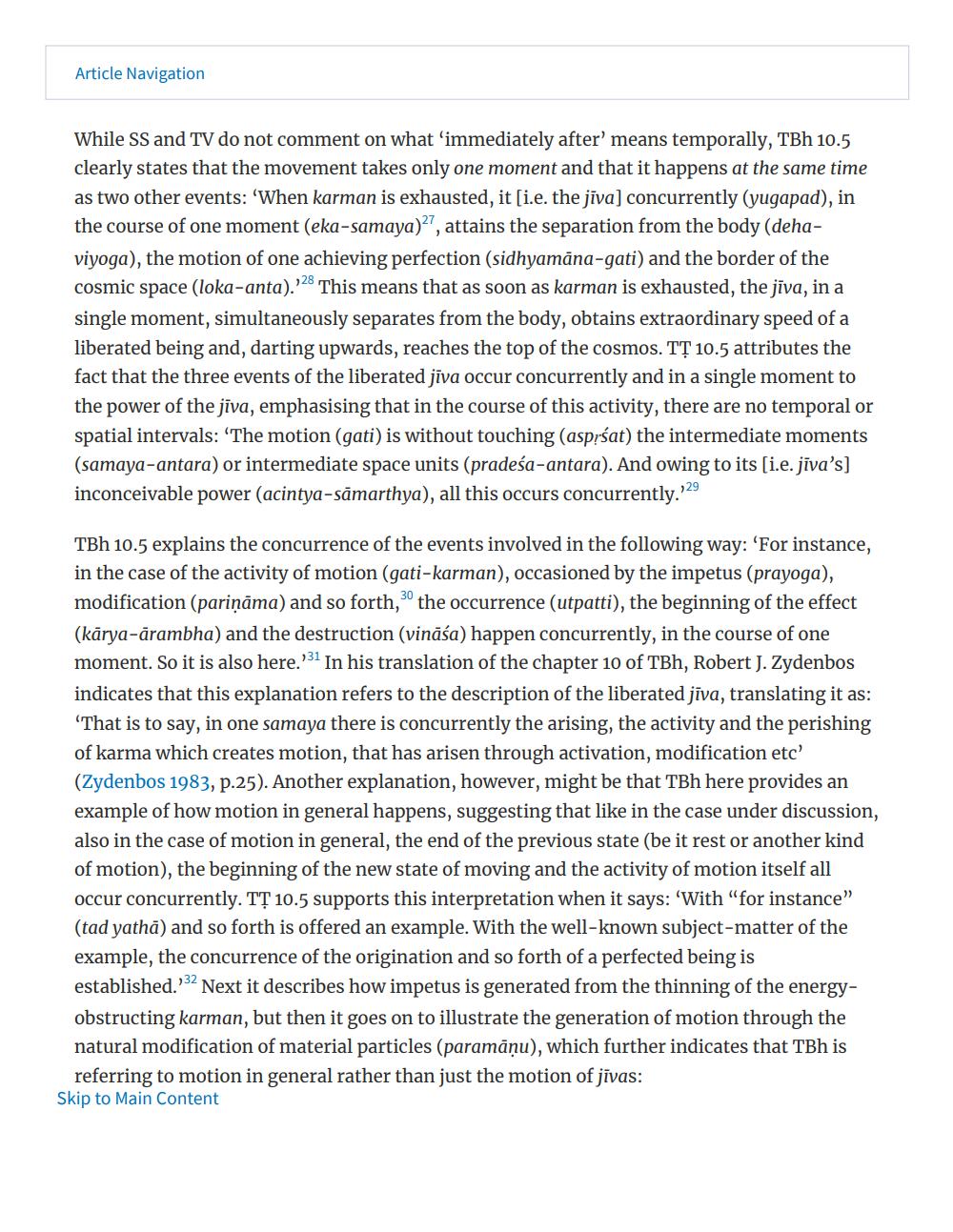Book Title: Jaina Philosophers On Nature Of Liberation Author(s): Publisher: Unknown View full book textPage 5
________________ Article Navigation While SS and TV do not comment on what 'immediately after' means temporally, TBh 10.5 clearly states that the movement takes only one moment and that it happens at the same time as two other events: 'When karman is exhausted, it [i.e. the jīva) concurrently (yugapad), in the course of one moment (eka-samaya), attains the separation from the body (dehaviyoga), the motion of one achieving perfection (sidhyamāna-gati) and the border of the cosmic space (loka-anta). This means that as soon as karman is exhausted, the jīva, in a single moment, simultaneously separates from the body, obtains extraordinary speed of a liberated being and, darting upwards, reaches the top of the cosmos. TT 10.5 attributes the fact that the three events of the liberated jīva occur concurrently and in a single moment to the power of the jiva, emphasising that in the course of this activity, there are no temporal or spatial intervals: 'The motion (gati) is without touching (asprśat) the intermediate moments (samaya-antara) or intermediate space units (pradeśa-antara). And owing to its (i.e. jīva's] inconceivable power (acintya-sāmarthya), all this occurs concurrently.29 TBh 10.5 explains the concurrence of the events involved in the following way: 'For instance, in the case of the activity of motion (gati-karman), occasioned by the impetus (prayoga), modification (pariņāma) and so forth, the occurrence (utpatti), the beginning of the effect (kārya-ārambha) and the destruction (vināśa) happen concurrently, in the course of one moment. So it is also here.:31 In his translation of the chapter 10 of TBh, Robert J. Zydenbos indicates that this explanation refers to the description of the liberated jīva, translating it as: That is to say, in one samaya there is concurrently the arising, the activity and the perishing of karma which creates motion, that has arisen through activation, modification etc (Zydenbos 1983, p.25). Another explanation, however, might be that TBh here provides an example of how motion in general happens, suggesting that like in the case under discussion, also in the case of motion in general, the end of the previous state (be it rest or another kind of motion), the beginning of the new state of moving and the activity of motion itself all occur concurrently. TȚ 10.5 supports this interpretation when it says: 'With "for instance" (tad yathā) and so forth is offered an example. With the well-known subject-matter of the example, the concurrence of the origination and so forth of a perfected being is established. 132 Next it describes how impetus is generated from the thinning of the energyobstructing karman, but then it goes on to illustrate the generation of motion through the natural modification of material particles (paramāņu), which further indicates that TBh is referring to motion in general rather than just the motion of jīvas: Skip to Main ContentPage Navigation
1 ... 3 4 5 6 7 8 9 10 11 12 13 14 15 16 17 18 19 20 21 22 23 24 25 26 27 28 29
